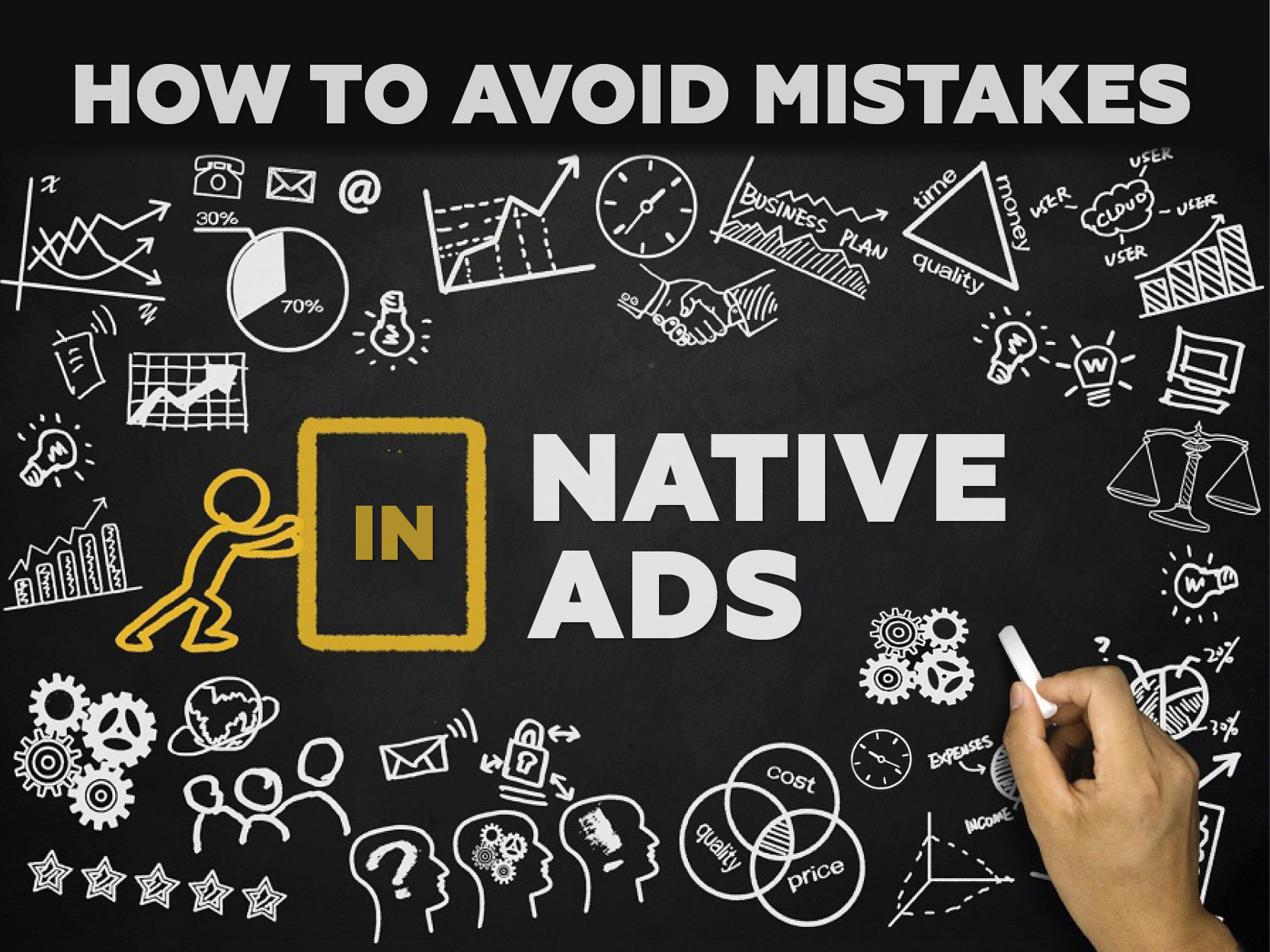How to Avoid Mistakes in Native Ads?

Talking about native advertising marketers always present benefits of using it and never speak about problems that can occur. In fact, native advertising is not a magic pill. And we should know some weak points of it.
To be frank, there is one reason why people hate native advertising – it can be misleading and make them feel cheated.
Because of this fact native advertising became the subject of numerous angry rants. For example, John Oliver in his show «Last Week Tonight», said that even if the native advertising is clearly labeled as an advertisement, it does not mean that it is trustworthy. He cites a study conducted by the IAB, which showed that half of the audience could not differentiate native ads from actual news, and also points out that advertisers are betting on consumers who are not sufficiently developed intellectually.
But is it possible that a person with the widespread use of native advertising, ceases to distinguish advertising from mere content? This is already happening, and one of the clearest cases of such “loss of the sense of reality” became the advertising from the Church of Scientology.
The announcement was published in the online version of the journal The Atlantic in the form of an article that praised the Church of Scientology leader’s activities for 2012. This article was presented as a real endorsement of the church by The Atlantic, though in reality it was an ordinary advertising. Another interesting fact is that, under the Article there were extremely positive comments. Thus, the “honesty” of the publication was under the question, and after 11 hours, it was removed.
This case has caused a wide resonance among readers of The Atlantic, and the magazine was heavily criticized. In justification of the representatives of the magazine stated that only published a sponsored content. Since then, The Atlantic has created stricter rules for placing advertisements.
What does this example mean? Perhaps that native advertising should not be considered as a way to disguise advertisements as news – such advertising can likely fall into the evil category and lead to the complete dismay of customers to your company. And even remove such advertising, the reputation of return will be impossible.
How to make sure that the native advertising works for you
So, we have considered examples of native advertising, both successful and unsuccessful, and also learned about some of its positive and negative sides. And certainly, you are wondering – what’s next? Should we use native advertising, and if yes, how to make sure that this will lead to success and that customers will not hate you?
Of course, there is no universal prescription for each type of business. But one thing is clear – to ensure that the audience gets positive emotions from your native advertising, you should make every effort to create the most high-quality and interesting content.
After all, when you read an article that is really exciting, based on pure facts, it doesn’t matter for you whether it is advertising or not, isn’t it?
The main factor that determines the success of native advertising is its quality.
Native advertising must contain highly interesting and useful information and, of course, there is no place for a long paean of your company and its services.
And again, most of the sites that publish native advertisements, are ready to assist in the creation of content for a fee, and it makes sense to take advantage of their services, because, by publishing the material, they are responsible for the safety of their reputation.
What do you think about native advertising? What emotions do you feel when faced with it? Have you used it for your business, and if so, what benefits it has brought? Write about it in the comments, is to know your opinion very interesting.


